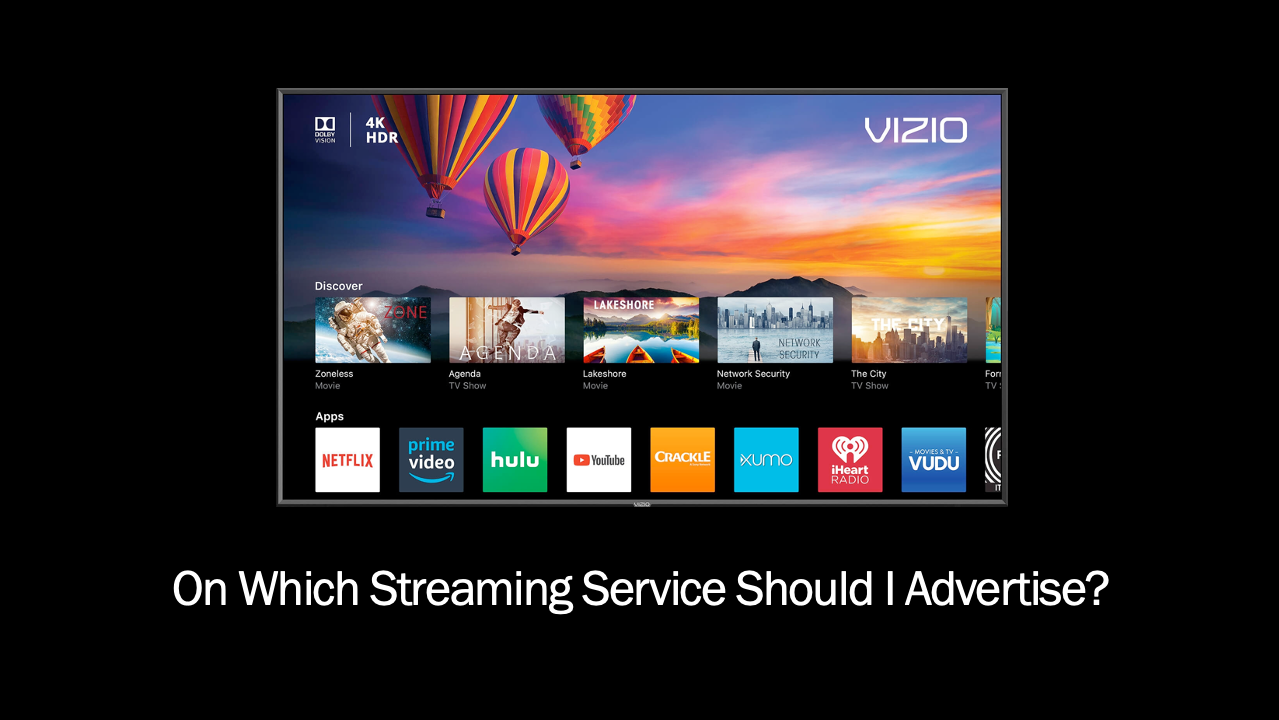Advertisers are hearing the stats about all the migration to streaming TV. They’ve cut the cord at home and find themselves watching Netflix, Hulu, Disney+, Pluto and many other online channels. While watching ad supported programs, they’re seeing the commercials and that’s got them wondering if connected TV should be a part of their advertising strategy in 2021.
The answer to that last query is yes, most definitely. It’s time to advertise in the OTT/CTV space. But the question of which streaming services on which to advertise… well, that’s a little more complicated.
The problem is that it’s the wrong question to ask in the first place. To make my point, let’s revisit 2009 and look at the digital banner ad space. Do you remember those ads? They were basically online billboards that appeared on most ad-supported websites. And like real-world billboards, they were sold based on web traffic.
A website with a lot of views could sell banner ads because they had a large audience. All of the fancy targeting strategies that we know and love in 2021 were still in their infancy. Website retargeting was just starting to give people the creeps.
Do you remember that first time you saw an ad for something you were just shopping for and you were like, “Whoa! How’d they do that?!”
Before targeted ads came along, advertisers chose where to place their banner ads based on size of audience and the category of the website itself. For example, a sports apparel company would advertise on popular sites related to health and fitness. Food companies would advertise on food or family related websites. Make-up companies advertised on websites about celebrity gossip or fashion.
In fact, some of that still happens today. But what is more common (and definitely more effective) is targeting the ad campaign based on the interest of the person visiting the website or using the mobile app. Today’s targeted display advertisers have come to realize that where their ads are placed isn’t that important if the prospect seeing the ad is relevant based on data.
That means that the advertiser selling yoga pants might deliver their ad on a website about home improvement or hunting. The advertiser selling football gear might deliver their ad on the baby tracker app.
Or put another way, advertisers no longer have to guess which websites or apps their prospects are using because data and the programmatic ad exchanges make it a moot point by delivering the ads to relevant prospects on whatever sites or apps they like. It means a highly relevant audience and less wasted ads. It’s a good time for display advertising.
Meanwhile, in 2021, the streaming TV space is growing every day. Every age group is watching OTT/CTV and there are new platforms joining the ranks of Netflix every day. Many of these platforms are AVODs (Ad-supported Video on Demand services) or FASTs (Free Ad-supported TV) like Pluto, Tubi and the IMDB channel. Also, as cable companies like Comcast dive into the streaming space, classic channels like Discovery and HGTV fall into this category as well. Even CBS All Access has ads.
The end result is that advertisers find themselves once again trying to figure out where their audience is. They are inclined to buy TV the way they always have – based on programming. Want to reach athletes? Advertise on sports. Want to reach intellectuals? Advertise on the news.
The problem is that a lot of intellectuals watch sports, and there are plenty of athletes watching the news. And it doesn’t end there. My mother is the biggest fan of home improvement shows that you would ever want to meet. And do you know what kind of commercials she is constantly shown? Home stores, hardware stores, tool companies, equipment dealers, men’s boots and clothing, trucks… you name a bunch of stuff that Tim “The Toolman” Taylor would like (grunt, grunt, grunt) and she sees those ads while she watched those shows.
Now ask me if my mother ever did a single home improvement project in her life. (She did not.)
Have I made my point? Targeting based on programming is old thinking, no different from what the banner advertisers were doing back in 2009. But this thinking is flawed because streaming TV is digital. And digital means data can be leveraged. And data being leveraged means targeting. And targeting means a more relevant audience and less waste.
Or put another way – advertisers should forget about trying to figure out where to advertise and start thinking about to whom you want to advertise.
The same technology that is used to target a display campaign can now be used to target prospects on streaming TV. That means that advertisers can show their ads to:
- People who have visited their website…
- People who are searching the web for their products and services…
- People who are reading content related to the advertiser’s industry…
- People who visit real-world locations like the advertiser’s competitors…
- People who are on a mailing list…
- And people who fit a certain demographic.
Imagine creating that audience, and then consider the original question: “On which streaming service should I advertise?” The answer: “Whatever streaming service your relevant prospect happens to be watching!”
And thanks to the use of data, the programmatic ad environment, cross-device matching and the availability of ad space on AVODs, you can reach that exact right customer.
Thanks for reading,
David McBee

